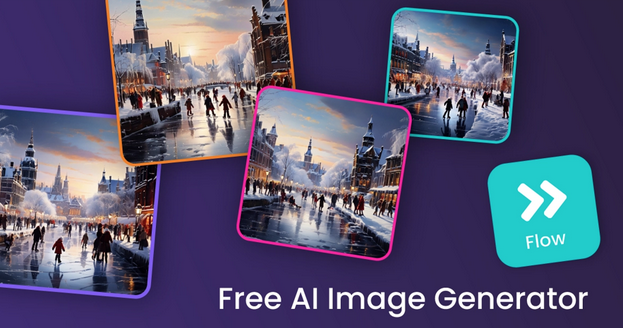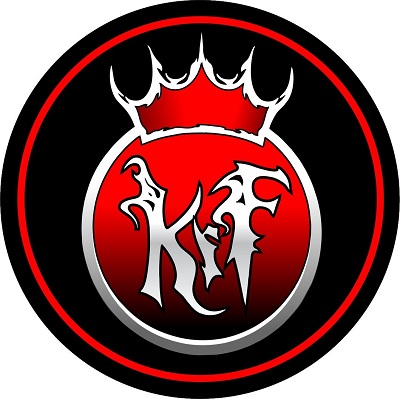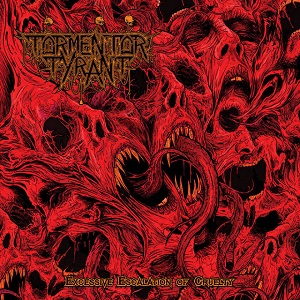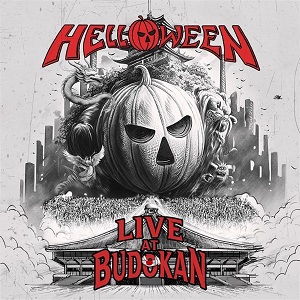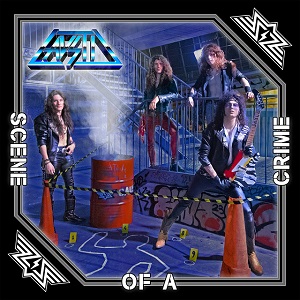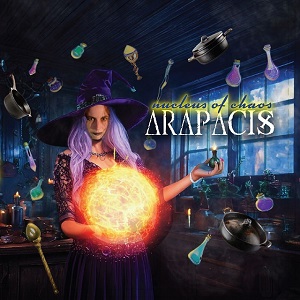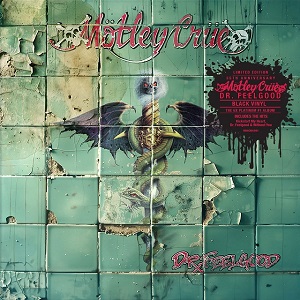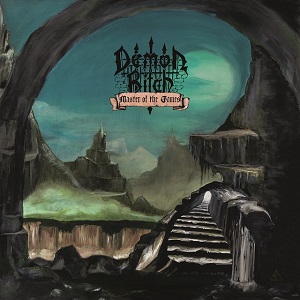The Evolution of AI Art: How AI Image Generators are Changing the Game
August 19, 2024, 5 months ago
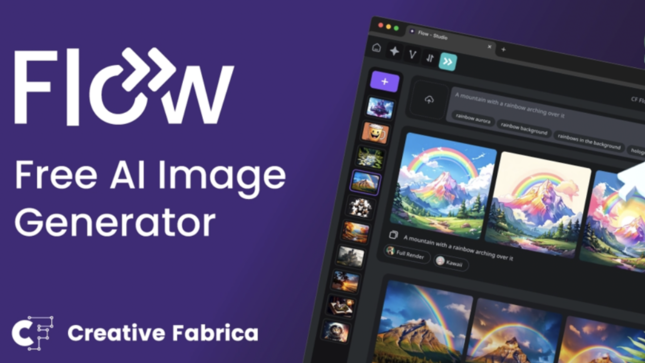
Artificial Intelligence (AI) has been making significant strides across various sectors, and the art world is no exception. Over the past decade, AI image generators have revolutionized how art is created, viewed, and appreciated. Among the myriad of AI tools that have emerged, free AI image generator Flow stands out as a game-changer.
Art and technology have always been intertwined, but the advent of artificial intelligence has taken this relationship to unprecedented levels. Let's explore the history of AI art and see what the future holds for AI image generators and AI art.
The History of AI in Art
The first practical attempts to use computers in art started in the 1950s-60s. AARON, an AI program, was designed to produce original artwork.
During the 1970s and 1980s, artists began to explore the possibilities of algorithmic art, which involved using computer algorithms to generate visual patterns.
The discovery of fractals and chaos theory in the late 20th century added a new dimension to digital art. The Mandelbrot Set, a well-known fractal, became a source of fascination and a tool for creating visually stunning images. This AI art became a part of POP culture, inspiring singers, writers, manga creators, and comic book
writers.
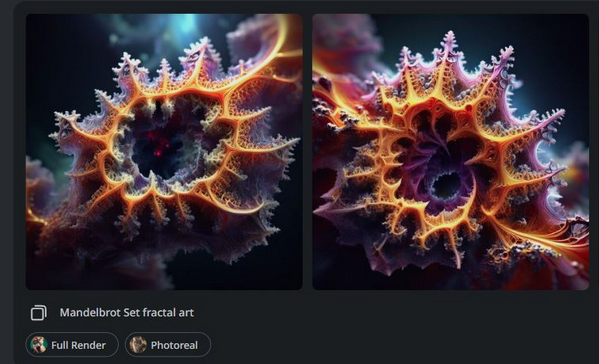
AI art based on Mandelbrot Set fractal generated with Flow
In 2015, Google released DeepDream, which quickly gained popularity among artists and technologists, leading to a wave of psychedelic and otherworldly digital art.
Generative Adversarial Networks (GANs) further revolutionized AI-generated art. In 2018, an AI-generated portrait titled "Edmond de Belamy," created by the Paris-based collective Obvious using GANs, sold at Christie's auction house for $432,500. This event marked a turning point, highlighting AI art's growing acceptance and value in the mainstream art market.
But AI art did not stop there. Image generators powered by artificial intelligence stepped into our daily lives and are here to stay.
Flow: A New Era in AI Art and Image Generation
Initially, using AI tools and technologies to create art was expensive and accessible only to a few. The increasing accessibility of AI tools like Flow is making the creation of AI art available not only to well-known artists but to everyone. This inclusivity means that users can experiment with AI and incorporate it into their creative processes regardless of their technical expertise, artistic recognition, or financial status. This shift will likely lead to a more diverse and vibrant AI art scene, with contributions from many more artists and amateur creators from various backgrounds.
Launched in 2024, Flow is a free Midjourney alternative that has quickly become a prominent player in the AI art scene. Flow focuses on enhancing creativity rather than merely replicating existing styles. Its sophisticated algorithms and user-friendly interface have made it accessible to both professional artists and hobbyists, making the art creation process accessible to everyone.
Innovative Features of Flow
Flow distinguishes itself with several groundbreaking features:
1. The ease of use: The interface of the Flow is straightforward and intuitive. Users can realize their graphics by simply describing the image they'd like to create via text prompt or uploading the image they wish to generate via Flow.
2. Style choice: The user can create the image in many styles: Magic Style, Photoreal, 3D Style, Low Poly, Cyberpunk, Kawaii, Cartoon, Watercolor, and Ink Blot.
3. Design choice: Digital artists can create three types of images: full-render graphics, graphics with a transparent background (PNGs), or seamless patterns.
4. Seamless creative flow: Users can continue to design and alternate their flow-generated images by changing the style, adding new text prompts, and adding the image to a new Flow. This feature empowers artists to guide the AI towards their desired outcome, resulting in a more personalized and satisfying creative process.
5. Integration with Studio: Flow works seamlessly with Creative Fabrica Studio, a free online design tool. It makes integrating AI-generated images into your design workflow simple and fast.
6. Licensing: Images created with Flow come with a commercial and personal license, so users can use them for business projects and personal crafts!
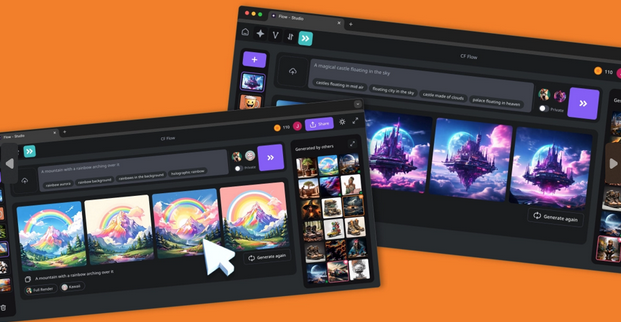
How Users Leverage Flow for Their Daily Needs
AI-generated images are becoming increasingly integrated into our daily lives, influencing various aspects of both personal and professional realms. AI-generated visuals are omnipresent, from social media filters that enhance selfies to personalized marketing campaigns. Now, AI tools not only help us make art but also assist in daily tasks.
Mark is a social media manager at a small startup company. He uses Flow to generate visually compelling content tailored to specific demographics. He likes that Flow is fast and simple to use and is integrated with Studio, an online design suite that Mark uses to design his visuals with text overlays.
Maria, a middle school biology teacher, uses Flow to generate detailed diagrams, models, and intricate 3D cellular structures, making it easier for students to understand cell biology. In the Flow settings, she chooses full-render Photoreal images with bright colors to create impressive visuals, which helps her foster a more inclusive and dynamic learning environment.
Simona is an interior designer who uses Flow to create visual presentations of home decor projects for her clients. She likes how fast her workflow is and how easy it is to adjust the designs when clients want to change something. Simona uses seamless creative flow to adapt and improve her visuals according to the client's needs.
AI-Generated Images in Unexpected Places
Flows's impact extends beyond conventional art forms and social media imagery. For instance, AI-generated designs are increasingly being used in fashion. Designers utilize Flow to create unique fabric patterns. Additionally, AI art finds applications in video game design, where Flow helps create immersive environments and character designs.
The Impact of AI on Human Creativity
While critics argue that AI could diminish the value of human creativity, proponents believe that AI tools like Flow actually enhance human creativity. By automating repetitive tasks and suggesting novel ideas, AI frees artists to focus on their work's conceptual and emotional aspects. This potential for AI to enhance and amplify human creativity is an exciting prospect for the future of art.
The evolution of AI in art is far from over. As technology advances, AI image generators like Flow will become even more sophisticated, offering unprecedented levels of customization and interactivity.
Conclusion
The history of AI in art is a testament to the enduring relationship between creativity and technology. AI's journey in the art world has been marked by continuous innovation and transformation. From the early days of AARON to the sophisticated capabilities of Flow, AI has continually expanded the possibilities of artistic expression. With its unique features and user-centric approach, Flow is at the forefront of this revolution, enabling creators to explore new imaginative horizons and redefine their artistic practice.
As we move forward, the collaboration between humans and machines promises to unlock new frontiers in art and design, challenging our perceptions and enriching our cultural landscape. The journey of AI in art is far from over, and the next chapter will undoubtedly be as exciting and transformative as the last.
